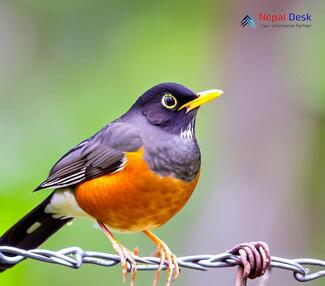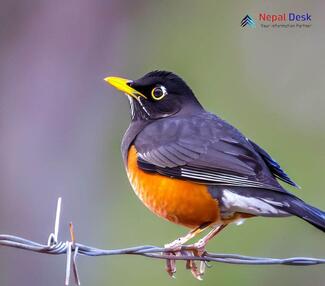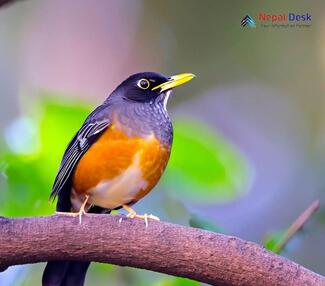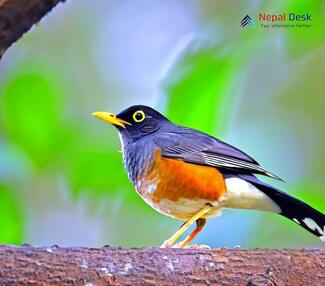Avid birdwatchers and nature enthusiasts, exploring the breathtaking landscapes of Nepal often leads to the delightful discovery of countless native bird species. Among these fascinating avian treasures, the Black-breasted Thrush (Turdus dissimilis) stands out with its captivating appearance and charming behavior. This article is dedicated to providing you with valuable information on this intriguing species, allowing you to appreciate and understand it better during your next birdwatching adventure.
The Black-breasted Thrush: An Enchanting Sight
The Black-breasted Thrush, scientifically known as Turdus dissimilis, is a medium-sized songbird belonging to the thrush family (Turdidae). Males have an unmistakable appearance with their slaty-black head and upper breast contrasting beautifully against the striking orange-red lower breast and underparts. Females, on the other hand, feature a subtle brownish-grey plumage on their head and upper breast, with similar orange-red lower breasts and underparts found in males.
A Melodious Songster
The vocal repertoire of the Black-breasted Thrush includes melodious whistles and chirps that will captivate any bird enthusiast's ears. While foraging or communicating with its peers, this enchanting songbird adds a pleasant soundtrack to your birdwatching experience in Nepal's rich natural habitats.
Natural Habitat in Nepal
In Nepal, the Black-breasted Thrush can be found mainly in well-shaded broad-leaved forests and mixed forests between 2,100 and 2,800 meters above sea level. They typically inhabit middle hills during the summer months before descending to lower elevations ranging from 1,000 to 2,000 meters during winter. It is not unusual to spot these stunning birds around human settlements as well.
Feeding Habits
Black-breasted Thrushes primarily feed on insects, earthworms, snails, and a variety of fruit depending on the season. Their slender, pointed bills are perfectly adapted for probing the ground or picking off insects and larvae from leaves and branches.
Nesting and Breeding
The breeding season for Black-breasted Thrushes in Nepal occurs between May and July. During this time, they build their nests using twigs, roots, moss, grass, and leaves. The female lays two to four pale blue eggs speckled with brown spots which are incubated for approximately two weeks before the chicks emerge.
Preserving the Beauty of Nepal's Avifauna
Nepal's thriving birdwatching community plays a crucial role in the preservation of its native bird species' habitats. By promoting sustainable ecotourism practices, birdwatchers can contribute to both raising awareness about these fascinating birds and preserving the environments they call home.
In conclusion, as you venture into the vibrant wilds of Nepal with your binoculars at hand and hope to spot the enchanting Black-breasted Thrush (Turdus dissimilis), remember to take a moment and appreciate not just their stunning appearance but also their unique behavior and melodious songs. Lastly, by respecting their natural habitat and supporting conservation efforts, you can ensure that future generations of bird enthusiasts will continue to be captivated by these remarkable creatures.




